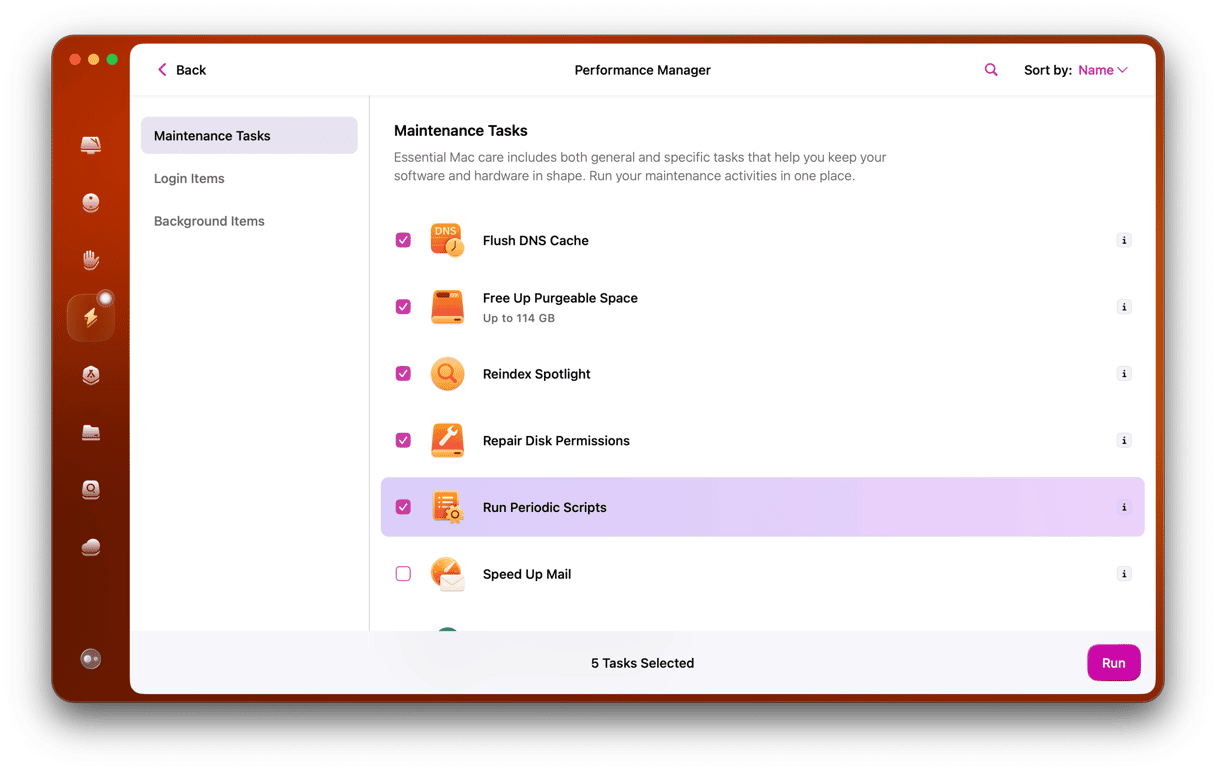There’s nothing like that “fresh Mac” feeling when everything is clean and running like new. A healthy Mac boosts productivity by working well and eliminating downtime. So, how to achieve this wonderful state? There are three ways.
First, buy a brand-new Mac. It’s not the most economical option, but there it is. Second, perform a clean install of macOS. While buying a new Mac is expensive financially, a clean reinstall costs you time, as it’s a tricky process that requires attention and careful preparation. That brings us to number three.
The third option is more economical, safer, significantly simpler, and comes in two parts. First, reclaim disk space by removing unwanted, troublesome files, and two, perform routine maintenance to keep your Mac in tip-top shape. Again, a utility like CleanMyMac lets you do all of that quickly, effectively, and, best of all, without reinstalling macOS.
In this article, you’ll learn how to clean up your Mac and get it running beautifully. But first, I’ll look at performing a clean installation for those interested in that route. It’s burdensome but possible. So here’s what you need to know about performing a fresh install of macOS.
Clean up your Mac with a fresh install — the drastic way.
Apple designs its Mac operating systems so that they can be installed “over the top,” which means all settings and user accounts will remain intact when you upgrade. For most people, this works just fine and is the recommended method. Those who still wish for a clean install must recognize that this means everything will be erased from their hard drive:
- The boot drive
- User accounts
- Your network settings and all software licenses
- Photos, music, and documents
That’s “everything,” as in every last thing. So, if you’re still game, here’s what you need to know before doing a clean install.
- Make reliable backups of your entire boot drive in several ways.
- Move important files to an online storage service like Dropbox plus a local external drive.
- Note what has been backed up to your iCloud account, if anything, as well as how to recover it.
With that done, you certainly can perform a clean install of macOS. Set aside a Saturday that you can devote to the task. We, however, recommend less drastic measures. Forget risky reinstallation and see the difference a cleaner Mac can make.
Clean up your Mac with a cleaner app

Broken preference files, login items, and even unneeded language files can accumulate on your computer’s drive. Most of these you won’t even see, so looking through your Mac’s folders won’t necessarily yield the junk you’re after. Fortunately, CleanMyMac has three modules dedicated to the areas of your Mac that often accumulate bulky files:
System Junk — There’s so much potential for bulky, hidden files here, including language files, macOS localizations, outdated cache files, and old user logs.
Mail Attachments — When you open or view a new attachment in Mail, the application stores a copy on your disk and keeps it there until you delete the associated email. After a while, the total volume of copied files may reach a couple of gigabytes or more. Clean the local copy while keeping the original on your email server intact.
Last but not least is Trash Bins. It’s so easy to forget about items in the trash. I’ve certainly done it, only to discover later I’ve got a couple of GBs just sitting in there! Start your free CleanMyMac trial and try it for yourself to see how easily it accomplishes all of this and more, including regular maintenance.
Bonus tip: run regular maintenance to keep your Mac like new
The other key to a Mac that’s happy and healthy is regular maintenance. CleanMyMac’s Maintenance module provides access to all sorts of optimization goodness. Quickly run essential scripts and procedures that will keep your Mac in great shape for a long time and prevent lag under high workloads. To find them, simply launch CleanMyMac and click the Maintenance icon.
The first option you’ll find useful is Run Maintenance Scripts, which are basic system routines — written by Apple — that macOS runs daily, weekly, and monthly. They aim to keep your Mac in shape, and now you can run them whenever you like.

If some apps are misbehaving on your Mac, repairing disk permissions may fix the issue. Unfortunately, the manual way to repair disk permissions via Disk Utility has been disabled since El Capitan. But with CleanMyMac, you can do that with a couple of clicks.
Additionally, rebuild launch services. Finder uses the Launch Services database to keep information about file types and applications assigned to open them by default. As you install, remove, or update applications, the database may become corrupted and cause some troubles with opening applications or with displaying correct contents of the Open With menu. Use the Rebuild Launch Service task to resolve these issues.
Get that “fresh Mac feeling” yourself with CleanMyMac. While it’s admittedly not as fun as unboxing a brand new Mac, it’s fast, effective, and a lot less terrifying than wiping your drive clean, crossing your fingers, and starting from scratch. Try it for free and see the difference a clean Mac can make. So, grab it now and get cleaning.







